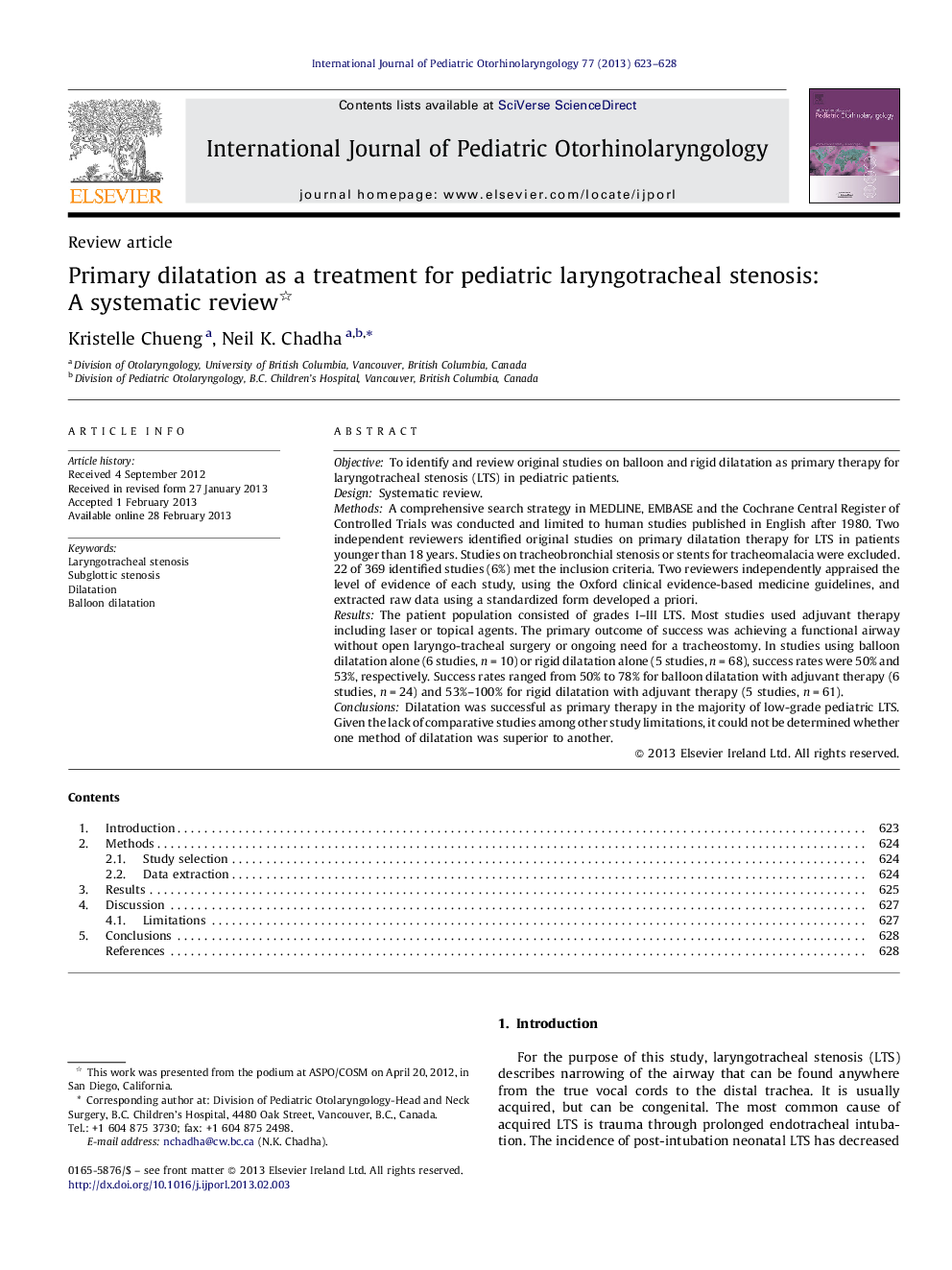| Article ID | Journal | Published Year | Pages | File Type |
|---|---|---|---|---|
| 4112603 | International Journal of Pediatric Otorhinolaryngology | 2013 | 6 Pages |
ObjectiveTo identify and review original studies on balloon and rigid dilatation as primary therapy for laryngotracheal stenosis (LTS) in pediatric patients.DesignSystematic review.MethodsA comprehensive search strategy in MEDLINE, EMBASE and the Cochrane Central Register of Controlled Trials was conducted and limited to human studies published in English after 1980. Two independent reviewers identified original studies on primary dilatation therapy for LTS in patients younger than 18 years. Studies on tracheobronchial stenosis or stents for tracheomalacia were excluded. 22 of 369 identified studies (6%) met the inclusion criteria. Two reviewers independently appraised the level of evidence of each study, using the Oxford clinical evidence-based medicine guidelines, and extracted raw data using a standardized form developed a priori.ResultsThe patient population consisted of grades I–III LTS. Most studies used adjuvant therapy including laser or topical agents. The primary outcome of success was achieving a functional airway without open laryngo-tracheal surgery or ongoing need for a tracheostomy. In studies using balloon dilatation alone (6 studies, n = 10) or rigid dilatation alone (5 studies, n = 68), success rates were 50% and 53%, respectively. Success rates ranged from 50% to 78% for balloon dilatation with adjuvant therapy (6 studies, n = 24) and 53%–100% for rigid dilatation with adjuvant therapy (5 studies, n = 61).ConclusionsDilatation was successful as primary therapy in the majority of low-grade pediatric LTS. Given the lack of comparative studies among other study limitations, it could not be determined whether one method of dilatation was superior to another.
